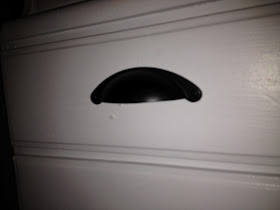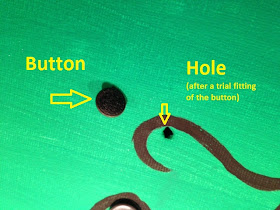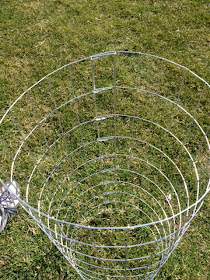Remember those tomato cages we made? Remember how I said they'd also work for potato tubes?
No?
Now you have the tomato cages-slash-potato tubes, so what's next?
Well, let's plant some potatoes!
Supplies you'll need for potato tubes:
Wire Potato tubes we built
Potatoes (see below)
Straw (we used about half a bale of straw for two tubes)
Compost and soil mixture (we used one bag of store bought compost and half a bag of top soil mix which filled about 3/4 of a potato tube)
Water
Could you plant the potatoes in the ground? Absolutely. Farmers and gardeners have planted potatoes in the ground since the beginning of potato planting time. Potatoes like to be planted in the ground. The ground likes having potatoes. It's a happy potato and ground family.
But, it also takes up space, and if you're limited on how much space you have, because you like planting, say...tomatoes, and peas, and squash and zucchini, and eggplants, and corn and...well, all that vegetable goodness, then planting space may be of demand.
With potato tubes, you can plant quite a bit more potatoes than if you'd planted them in the ground. (Some sources say up to 25 pounds of potatoes can grow in one of these things! But, I'm still in the experimental stage and haven't weighted the amount of potatoes yet.)
So, if you have one potato plant, stick it in the ground. If you want to plant a lot of potatoes (and harvest a lot of potatoes), then you may want to consider using a potato tube.
First, you'll need one (or more) of those nifty tomato cages/potato tubes we created.
And you'll need some potatoes.
You know those potatoes you have in the back of your pantry--the ones with the weird root things coming out of them? (Those weird root things are called eyes.) They'll work.
Or, you can buy some seed potatoes. I have a mix of the weird rooted pantry potatoes and purple seed potatoes.
You need only one eye per potato to grow, so if you potato has more than one eye, then cut between the eyes (ouch!) and you'll have two potatoes to plant. Let the cut pieces sit (or dry) for about 24 hours before planting though.
Now, about those potato tubes....
I strongly recommend using the straw to line the potato tubes. The straw keeps the compost mixture in place, plus it helps keep the compost mixture moist and from drying out in the sun.
Take some of the straw and place it in the bottom of the potato tube--about 6-8 inches thick. Bring it up a bit on the sides (about an inch or two), creating a "bowl" in which you'll add the compost mixture.
Next, place about 8-12 inches of the compost mixture in the bottom of the potato tube, breaking up any big chunks of compost.
Next, place your potatoes in atop the compost mixture with the eyes facing towards the straw. You want them fairly close to the straw (maybe even a bit closer than these were in the pic). You can see that we had a mixture of purple and pantry potatoes. (The two at 9:00 and 10-ish are the pantry potatoes.)
Add about 8-12 inches of soil to the top of the potatoes, and add more potatoes, building up the sides with the straw as you go.
You really should water each layer, but I forgot until I'd finished and just soaked the potato tube really well.
At the end, you'll have a potato tube as tall (or nearly as tall) as your wire tube. You can either top with straw (to maintain the moisture), or plant some plants in there. If I had some plants ready to be planted (like maybe some eggplant), I'd drop it in there. I will once it's ready.
Now, about the potatoes growing...within a few weeks, you should notice greenery coming out the sides of your potato tubes. (Sorry I don't have any pics yet because, well, mine haven't started sprouting yet.) When will you have potatoes, you ask?
The potato greenery will get bushy. Very bushy. Don't go digging up the potatoes yet.
Then, your potato greenery will get little white flowers. Don't go digging up the potatoes yet.
Then, it will seem like your potatoes are starting to die. You can dig up a few then. (Start from the top and dig some out, leaving the potato greenery.) By the end of the growing season, when your potato plants start to look like they're really starting to die, THEN you can dig out your potatoes.

















































